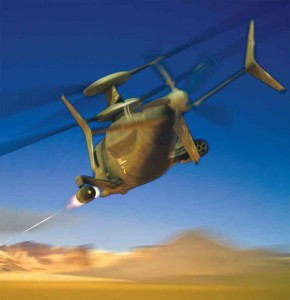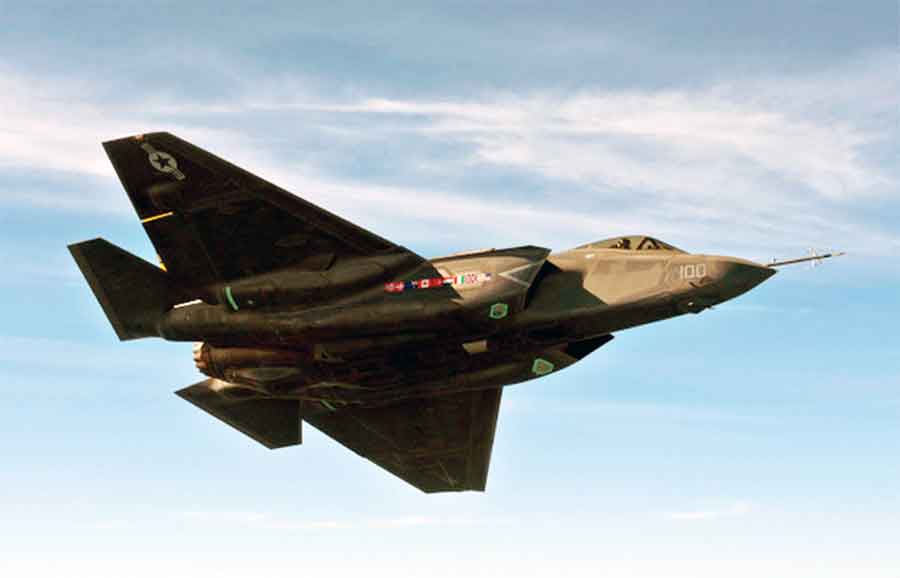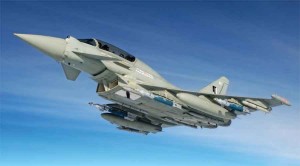In the past three years, NATO countries have cut $120 billion from their combined defence budgets, and they are set to fall further in the next decade. In the US, the Budget Control Act will, by 2021, cut US government spending by $1 trillion much of which will come from defence cuts. US Defence Secretary, Chuck Hagel, said in 2013 that one of the least drastic ways of reaching cuts needed by the sequester would see up to 70,000 less active personnel in the US Army and up to 65,000 less in army reserves. The US Air Force could lose some 25,000 personnel because of sequester, along with 550 aircraft, according to USAF Secretary Eric Fanning.
The US Air Force might have to drop plans to buy four or five of the 19 F-35 Joint Strike Fighters…
With the drawdown of NATO combat operations in Afghanistan underway in 2014, nearly all of the countries that have been involved in the International Security Assistance Force over the past decade or more are re-assessing their future defence requirements. However, the preferred way forward for most of them seems to be focused on reducing defence budgets which is leading to the restructuring of defence industries, particularly in the United States and Europe.
In the past three years, NATO countries have cut $120 billion from their combined defence budgets, and they are set to fall further in the next decade. In the US, the Budget Control Act will, by 2021, cut US government spending by $1 trillion much of which will come from defence cuts. US Defence Secretary, Chuck Hagel, said in 2013 that one of the least drastic ways of reaching cuts needed by the sequester would see up to 70,000 less active personnel in the US Army and up to 65,000 less in army reserves. The US Air Force could lose some 25,000 personnel because of sequester, along with 550 aircraft, according to USAF Secretary Eric Fanning.
Looking at what could happen if the current US defense drawdown followed the pattern of cutbacks after the end of the Korean War, the Vietnam War and the Cold War, the impact of the budget uncertainty would affect the ability of its armed forces to ensure the military is prepared for action in the future. Army Assistant Secretary Heidi Shyu told the US House of Representatives at the end of last year that more automatic budget cuts could force the Army to buy fewer Apache and Chinook helicopters and delay upgrades to the Abrams Main Battle Tank and Bradley Infantry Fighting Vehicle. William LaPlante, a Principal Deputy USAF Secretary, said the Air Force might have to drop plans to buy four or five of the 19 F-35 Joint Strike Fighters it was scheduled to purchase in 2014. Navy officials also said they would have to cancel much of their planned maintenance for ships and aircraft.

Boeing is embarking on a series of future programmes with other manufacturers such as Sikorsky for the Joint Multi-Role Helicopter
However, while the US remains the world’s richest nation, in Europe, defence cutbacks are biting harder and quicker. NATO European countries now account for around 26 per cent of the Alliance’s defence expenditures, down from around 30 per cent in 2007.
The reason is the need to service debts and cut spending. To return to their debt levels before the financial crisis, EU states would have to dedicate one per cent of their GDP, some $100 billion a year, every year for the next 20 years. The governments of two of the biggest European defence spenders, the United Kingdom and France have to cut the amount they spend on both personnel and equipment. The British armed forces are due to be significantly reduced in numbers by thousands of personnel by 2020. The Army will lose 20,000 soldiers, the Royal Navy 6,000 personnel and the Royal Air force 5,000.
The austerity measures in the defence budgets of the NATO countries will inevitably reduce orders for new equipment…
In 2013, the French government announced a reduction of 34,000 military and defence staff by 2019, halving its order for the Rafale combat jet aircraft and delays in acquiring new attack submarines and frigates. NATO’s European countries will spend in 2014 about the same, under $50 billion on major new equipment, as they did in 2003. The Netherlands Ministry of Defence is planning to sell up to 100 armoured vehicles including Main Battle Tanks and Infantry Fighting Vehicles following new cuts in the defence budget and sell off most of the army’s heavy equipment in storage. The Dutch Defence Minister Jeanine Hennis-Plasschaert has revealed that at least one infantry battalion will be disbanded as part of personnel and equipment reductions within all three services.
The austerity measures in the defence budgets of the NATO countries will inevitably reduce orders for new equipment and with less equipment to service, maintain and operate, the defence industry is going to have to adjust to the new reality of dealing with less money, and fewer jobs.
In the US alone, direct, indirect and induced employment connected with the US defence and aerospace industry totals 3.53 million jobs while Europe’s industries generated 734,000 direct jobs, but these numbers are unsustainable in the new world order. US defence and aerospace companies have shed more than 160,000 jobs over the past five years as Pentagon spending has waned, and more are in the pipeline.
Lockheed Martin has announced that it may cut 4,000 more jobs in the US in 2014 as it grapples with defense budget cuts. With the production of the F-22 Raptor terminated and production of the F-16 fighter and the C-130 transport approaching the end of their lives, it would appear that Lockheed Martin is putting all its eggs in one basket with the F-35 Joint Strike Fighter, but the programme has still has numerous development and cost hurdles to overcome before it reaches its full market potential.
Demand for Boeing’s Apache and Chinook helicopters remains high…
Boeing is also faced with falling orders for its range of military aircraft including the C-17 heavy transport produced in California where it plans to cut more than 2,000 jobs and production of the F-15 Eagle and F/A-18 Super Hornet at St Louis. Demand for Boeing’s Apache and Chinook helicopters remains high. In an effort to diversify its portfolio, the company has announced in the past year a whole raft of wide-ranging military programme initiatives partnered with other manufacturers. These include an agreement with Brazil’s Embraer to co-operate in the development of its KC-390 medium tactical tanker transport and lead sales of it in the United States and some Middle East countries, with Sikorsky for the US Army Joint Multi-Role (JMR) Technology Demonstrator programme to replace the army’s UH-60 Black Hawk and AH-64 Apache helicopter fleet, and most recently, Sweden’s Saab Group to jointly develop and build an all-new trainer aircraft for the US Air Force’s T-X trainer competition.
Europe’s military aerospace industry is dominated by the Eurofighter multi-role fighter aircraft produced by a consortium of manufacturers from Germany, Italy, Spain and the UK. Although more than 400 Eurofighters have been delivered to the partner countries, export sales have been disappointing. Having lost fighter competitions in India, South Korea and the United Arab Emirates, Eurofighter consortia members are faced with production close down in 2018.






